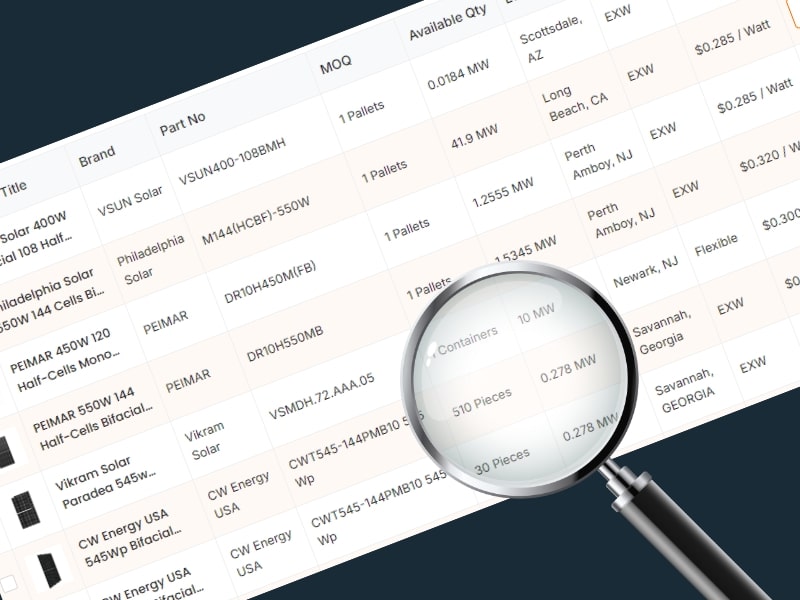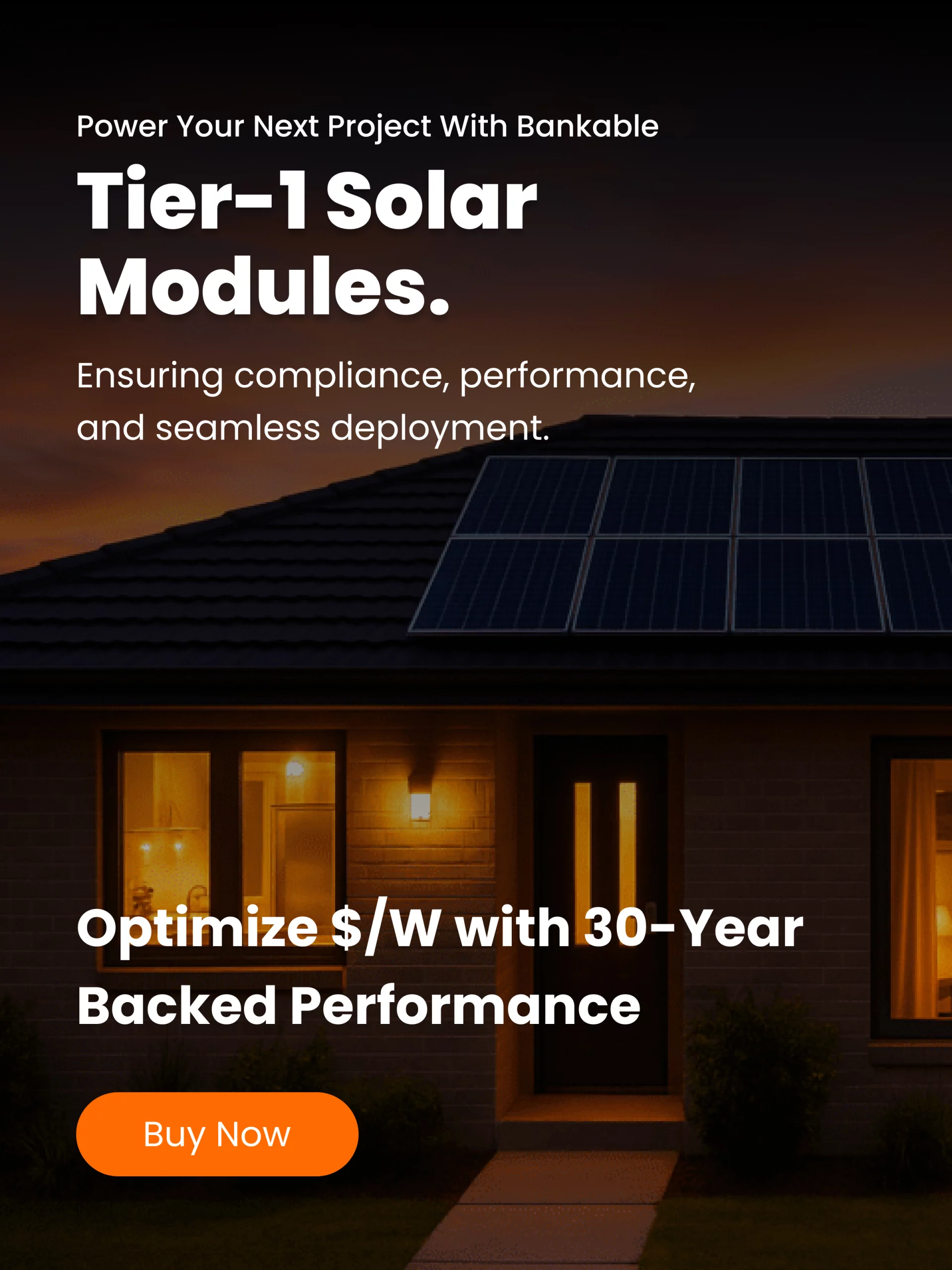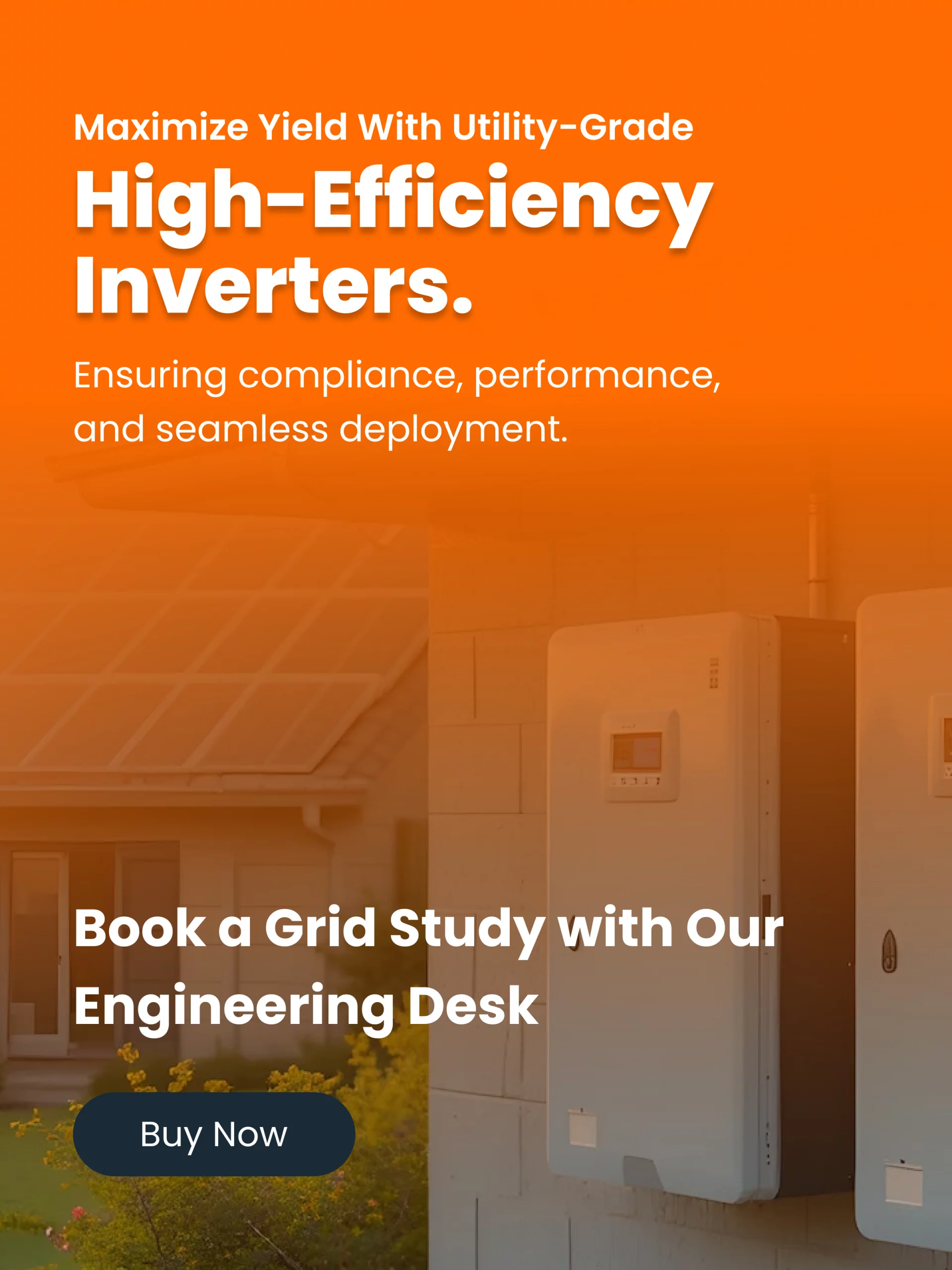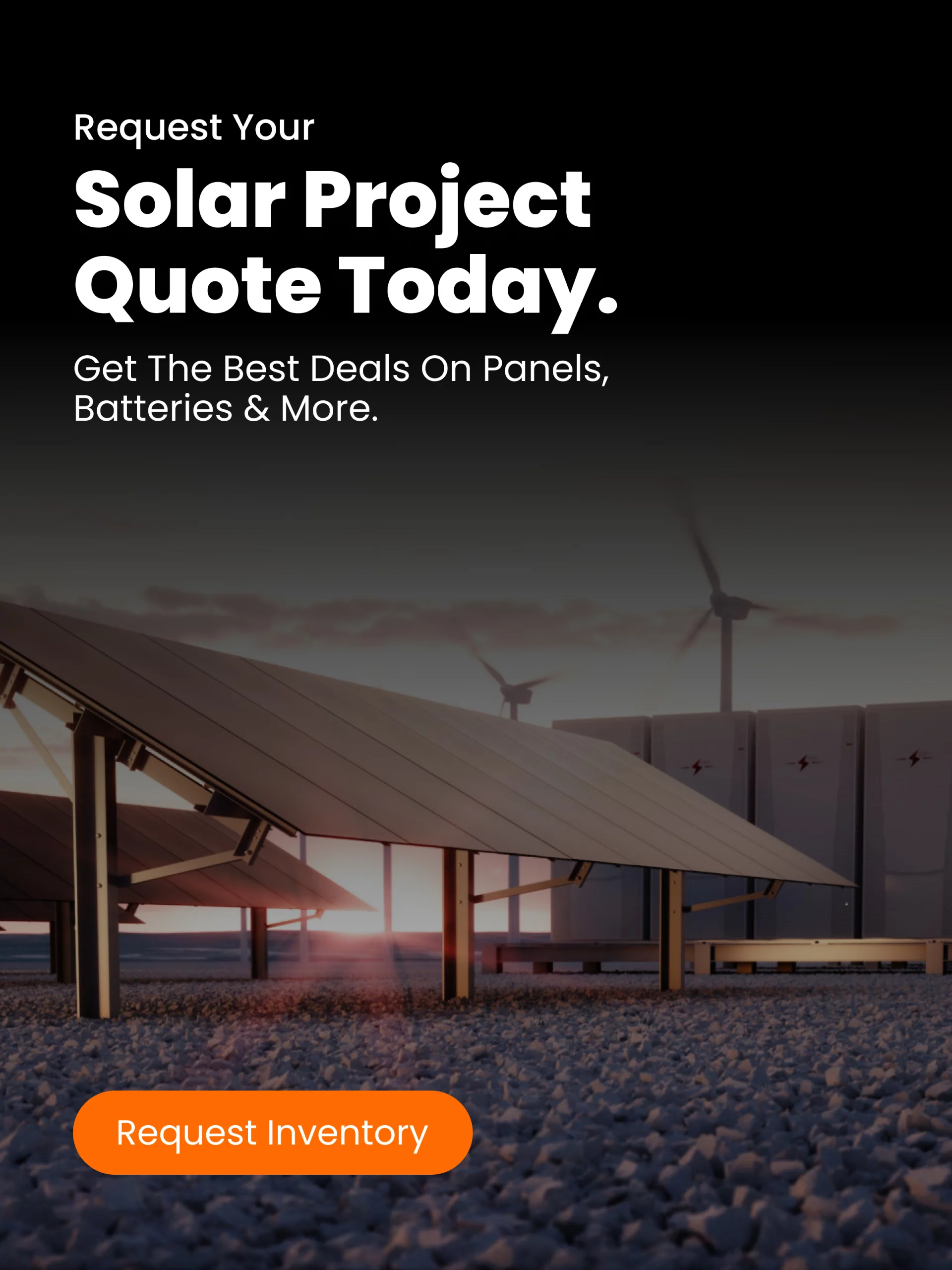Sunhub’s Solar Trader Platform gives buyers unprecedented visibility into availability and pricing on a huge inventory of solar products. For example, selecting “solar panels” alone from the top menu generates pages of deals from a long list of manufacturers.
While some buyers may know exactly what they’re looking for, others might discover that it’s harder to choose. Here’s a look at some of the different tools and filters Sunhub uses to help sort through products, and a deeper explanation of what they mean to lead you closer to finding the best option for your project.
Understanding different solar panel technologies
After selecting the Solar Panel Category, Sunhub allows filtering to refine your search. For instance, you can sort by specific solar panel technologies.
Did you know that solar cells were first invented in the 1800s? Modules have certainly come a long way since that time, particularly in terms of design, cost and efficiency. Today, solar professionals have a variety of technologies to choose from. Buyers can sort through Sunhub listings using the following filters:
- Polycrystalline: Polycrystalline solar panels are made from cells that contain multiple silicon crystals that act as semiconductors, absorbing energy from sunlight and releasing electrons to create electrical current and generate power. They are typically less expensive than monocrystalline panels but also less efficient.
- Monocrystalline: Monocrystalline solar panels are made from a single piece of silicon, which limits their size but also gives electrons more room to move, allowing these modules to reach a higher efficiency than their polycrystalline counterparts.
- Thin film: Thin-film solar panels are made of super thin layers of photovoltaic materials, increasing their flexibility and lowering their weight. They require less materials to produce so can be an economical choice but also require more space to generate the same amount of electricity as mono and polycrystalline options.
- Concentrated PV Cell (CPV): CPV uses lenses or mirror to focus sunlight onto solar cells to generate electricity. Directing the sun to a small area (typically through the use of solar trackers, which follow the sun) increases efficiency. However, they can reach high temperatures and require a means to cool PV cells to avoid damaging the system.
- Bifacial: Bifacial solar panels contain two back-to-back layers of photovoltaic cells and are nearly all monocrystalline. Having cells on both sides of the panels helps produce more solar than a typical monofacial panel, which results in greater efficiencies but at higher upfront installation costs.
- TOPCon: Solar modules made from TOPCon solar cells have been covered with phosphorus to give the material a negative charge. This offers higher efficiency and better performance in low-light conditions. Since the technology was first introduced in 2013, it’s been adopted by many mainstream manufacturers. TOPCon’s popularity is expected to continue to grow in coming years.
- Q Antum: Hanwha Qcells developed Q.ANTUM, an advanced Passivated Emitter Rear Cell (PERC) technology, which captures sunlight back into the cell through their rear sides to generate more electricity. Qcells treats the back of its solar cells with a nano-coating and takes additional measures to increase the efficiency of its modules.
Shop by the Watt
When looking to create a better way for solar contractors to buy with the Solar Trader Platform, Sunhub noticed that buyers and sellers weren’t speaking the same language. Solar contractors deal with projects in Watts, but sellers list products by number of panels, in bulk containers or other units. That’s why we let shoppers select from several filter options to find exactly what they need and display prices per Watt.
- 300-399 Watts
- 400-499 Watts
- 500+ Watts
Because wattage indicates how much electricity a panel can produce in an hour, it’s an important consideration when determining the number of panels needed for planning any solar project.
Choose a color
Solar panels come in a variety of colors. Sometimes a customer prefers the look of one over another. Neighborhood or city ordinances may even have specific aesthetic requirements for solar that must be followed. Sunhub makes selection easy by allowing you to filter by the color of the panel.
The solar panel tiering system
You can also sort panels by tiers in Sunhub. BloombergNEF developed a tiering system for PV module products in 2012 based on bankability, to create a transparent differentiation between the hundreds of manufacturers of solar modules on the market. Bankability refers to whether projects using the solar products are likely to be offered non-recourse debt financing by banks.
- Tier 1 module manufacturers are those that have provided products of their own brand and manufacturing to at least six different projects, which have been financed non-recourse by six different commercial banks, in the past two years.
- Tier 2 and Tier 3 BloombergNEF only publishes a Tier 1 list, so there are no official lists for Tier 2 and Tier 3 solar panel providers. These terms were created by the industry to refer to any suppliers not on Bloomberg’s Tier 1 list.
It’s important to note the suppliers on Bloomberg’s Tier 1 list have the trust of banks and are financially sound, however the list doesn’t necessarily indicate panel quality. That’s why it’s important for buyers to consider overall warranty, cost, customer reviews and project requirements when selecting the right solar panel for their needs.
As with its batteries and solar inverter selections, Sunhub also offers filters for buyers to sort according to solar panel incoterms, condition and brand to find what they’re looking for.
Comparing solar panels on Sunhub
To further help buyers in their selection of solar panels, Sunhub has added a new comparison feature, which allows making a quick assessment of two modules side by side. To do so, simply choose two panels and hit the “Compare” button.
Then, select “Highlight Differences” to compare common characteristics. Specification documentation is also available for all panels for an even deeper dive.
Also, with some customers expressing the want to view top-tier products, and others seeking seller refurbished options to save costs, Sunhub responded by adding more filters to allow even more search refinement.
Sunhub is continually working to add efficiency to the solar procurement process. But remember that our knowledgeable team is always just a phone call away for customers looking for additional help in making purchases.
Explore Sunhub’s solar panel listings here.




